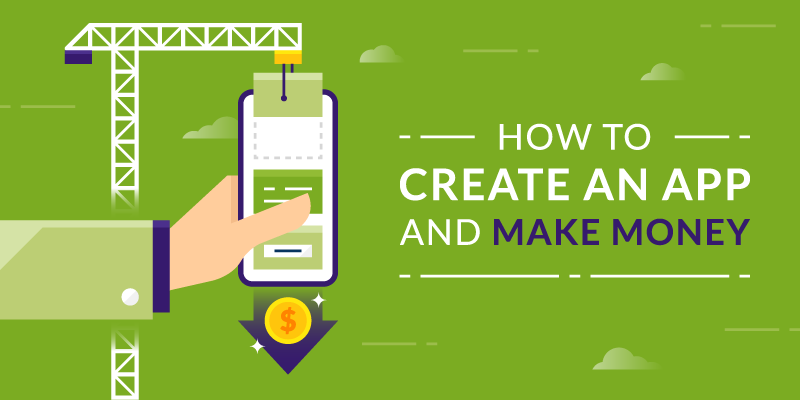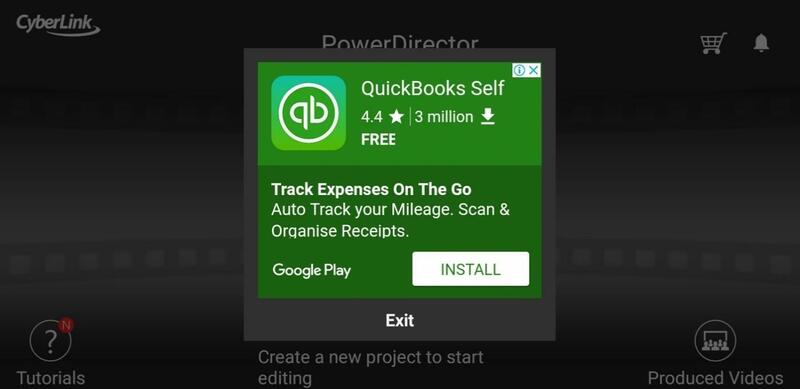
So, you’ve got an app idea… or maybe just a spark of one… and you’re wondering if it could actually earn you money. The short answer: absolutely!
The longer answer? It takes the right mix of idea, audience, and model. But thanks to no-code platforms like AppInstitute, building and monetising an app no longer requires investors or coding skills.
With over 7.3 billion smartphone users worldwide and nearly 90% of mobile time spent inside apps (DataReportal 2025), the opportunity has never been bigger. Whether you’re a small business, creator, or first-time founder, 2025 is the year to turn attention into income.
We’ve seen everyone from independent cafés to side-hustle fitness coaches build profitable apps without a single line of code – some earning steady monthly income, others using their app to power their entire business.

Step 1: Choose a Problem Worth Solving
Every successful app starts by answering one simple question: what’s the everyday pain point you’re fixing?
It doesn’t have to be groundbreaking. Sometimes, the best apps solve tiny annoyances – like waiting in line, losing loyalty cards, or missing bookings.
We’ve seen local restaurants thrive just by adding pre-order and pickup features, and salons cut no-shows in half after adding in-app booking deposits.
When your app genuinely saves time or effort, monetisation becomes effortless.
Step 2: Pick a Profitable Monetisation Model
Here are the most effective revenue models right now — all proven by AppInstitute users and 2025 market data:
1. In-App Purchases
Sell digital upgrades, extra content, or one-off add-ons.
Gaming, fitness, and wellness apps do especially well here.
“In-app purchase revenue grew to $233 billion in 2024, up 16% year-on-year.” Data.ai Report 2025
2. Subscription or Membership
Offer exclusive content, training, or perks for a monthly fee.
Creators, fitness coaches, and educators are leading this trend.
In our experience, subscription apps perform best when they deliver consistent new value, weekly workouts, recipes, or lessons, rather than one-off access.
3. Freemium Model
Offer a free version with optional upgrades.
It builds trust fast, and conversions rise once users see the benefits firsthand.
4. Transaction Fees
Restaurants, retailers, and booking-based businesses can charge small service or delivery fees per transaction.
We’ve seen small food brands earn an extra 8–10% revenue this way.
5. Affiliate or Partner Revenue
Promote relevant products inside your app and earn a commission.
Ideal for blogs, niche communities, or lifestyle brands.
6. Ads and Sponsorship
Still viable, especially for apps with high user volume or local audiences.
We’ve seen local community apps offset hosting costs entirely through small-business sponsorships.
Step 3: Build Your App (No Developers Needed)
No-code builders like AppInstitute let you design, test, and publish to iOS, Android, and as a Progressive Web App (PWA) – all from a visual dashboard.
You can drag-and-drop modules like:
-
Booking systems
-
Payment gateways
And since everything is integrated, you can start collecting payments and insights immediately.
We’ve seen new entrepreneurs go from idea to live app within a single weekend – and start taking payments within the same week.
Step 4: Launch and Grow Your User Base
Once your app’s live, your focus shifts to growth and retention.
Start by tapping into your existing channels:
-
Website: add “Download our App” banners
-
Social media: share behind-the-scenes previews and limited-time offers
-
Email lists: give loyal customers early access or referral rewards
In our experience, apps that launch with a strong offer – like “Get 10% off your first in-app order” – hit momentum much faster.
Step 5: Track, Optimise, and Scale
The beauty of running your own app is the data. You’ll see what users click, buy, or ignore.
Use that to fine-tune your pricing, design, and offers.
Apps that evolve based on user behaviour often double their revenue within the first six months.
Push notifications remain one of the highest-performing re-engagement tools. They’re free to send, direct, and impossible to miss.
“Push notifications boast an average open rate of 88%, compared to just 20% for email.” Localytics 2025
Real-World Results We’ve Seen
-
A café in Bristol added mobile ordering and loyalty rewards – they saw a 35% increase in repeat visits within three months.
-
A personal trainer in Dublin built a subscription-based fitness app – he replaced half his in-person sessions with digital clients by month four.
-
A local charity used its app to collect contactless donations at events – its annual fundraising jumped by 26%.
The takeaway? You don’t need millions of users – just a focused audience who loves what your app helps them do.
Things to Consider: Free Apps vs Paid Apps
While paid apps can be a good way to make money from your app, it can be limiting. First, there is no way for people to try out your service. This can act as a barrier that stops them from downloading your product. This is even more likely to be the case if your brand is unknown, and you may struggle to convince people to pay for your app.
A slight workaround could be to offer your app for free and then offer customers the option to pay a one-time fee to unlock the whole app. Although, on both Google Play and the App Store, this counts as an in-app purchase as the user isn’t paying to download the app.
Overall, you may find that other methods of app monetization are more effective. According to AppAnnie, the highest-grossing paid app on July 3 in the U.S. was Minecraft. However, it was only the 29th highest-grossing app overall. The second highest-grossing paid app is Heads Up, which isn’t even in the top 50.
If you are looking for a way to maximize app revenue, using a subscription or in-app purchases could be a better option than charging users to download your app.

As you can see from this screenshot, most paid apps are cheap. On the current list of top paid apps in the U.K., most are under £5 with only two in the top 21 costing over £10. Those are Site Audit Pro and FL Studio Mobile.
Use a Subscription to Get Repeat Payments
Asubscription is when developers charge users a recurring fee to use the app. The fee is usually monthly, although developers can give users the option to pay for a longer-term – for example yearly or quarterly – upfront for a discount.
This type of monetization is common with software like service apps or apps that provide access to media. Think about streaming apps such as Spotify or Netflix, or productivity apps like Microsoft Office or Dropbox.
Subscriptions are great for app developers as they can get consistent recurring money from the people using their apps. It works for users, too, as the monthly fee is often modest.
Unlike paid apps, subscription apps are usually free to download. This can be a good way for developers to gain a base of users and earn money. Having a larger number of downloads will also look good on the App Store and Google Play Store.
To encourage people to use the service, it is common for developers to offer a free trial. This will allow them to use the app for free and get an idea of what the app is about and how it can benefit them.
Consider a Freemium Model
Alternatively, apps that use a subscription model can offer a basic tier that provides some of the app for free, and then a paid tier that provides the full-service. This is what is known as a freemium model.
A good example of an app that does that is Medium, which offers users a limited number of premium articles per month, as well as access to the site’s free articles. If users want full access to the service, they have to pay a fee of $5 per month or $50 per year.

This can be a good way to keep people interested who maybe don’t want to sign up for the subscription now, but perhaps could be persuaded to do so in the future.
Beyond this, it is even possible to offer multiple layers of pricing. For example, there could be a free layer, a low-cost layer with some added features, and a layer with premium features that contain everything.
Productivity app Airtable allows users to use the app for free. However, there is also a Plus version for $10 per month, a Pro version for $20 per month, and an enterprise version with custom pricing.

Another type of subscription you could consider is non-renewing subscriptions. These subscriptions provide access to content for a limited amount of time. For example, an app could provide access to seasonal content during a global event.
What to Consider When Monetizing Your App with Subscriptions
Subscriptions are a great way to consistently make money from an app. However, your product has to offer enough value to make users willing to pay for it.
Unlike with advertising-based monetization methods, you won’t create an app and make money from people who use your app for free. Although, it is possible to display ads on the free version of your product and then take them away when the user signs up to a subscription.
In-app Purchases Can Be Highly Lucrative
In-app purchases are one of the most effective ways to make money from an app. According to Apple, there are four types of in-purchase:
- Consumables are items such as in-game points or currencies that can be used within the app. These are common in games, and they can be used by players to buy new items or access new levels. As the name suggests, these items can only be used once.
A game that has been highly successful at using consumables is Pokemon Go. In the game, users buy Pokecoins, which can then be used to buy various in-game items. Reports from earlier this year suggest Niantic has earned a total of $2.3 billion from the game.
- Non-consumable items are those that do not expire once a consumer has bought them. Examples of this include extra options in a photo editing app. Once a user has bought these items, they can use them for as long as they own the app.
- The final two types of in-app purchase are auto-renewable and non-renewing subscriptions.

The good thing about in-app purchases is there is essentially no limit to the amount people can spend. Paid apps that have a one-time fee, or even subscriptions with a recurring fee are highly limited in the total amount they can earn per user.
Games that use in-app purchases can be incredibly lucrative. In games, in-app purchases are often used to let users buy items to make their gaming experience better. This has led to free apps like PUBG, Clash of Clans and Pokemon Go consistently being ranked among the highest-grossing apps.
However, it isn’t only games that can effectively use in-app purchases. Other types of apps that successfully offer in-app purchases include photo editor apps offering additional options or filters or messaging apps offering users the chance to buy emoticons or gifts.
For example, the messaging app Kakao Talk is one of the highest-grossing apps globally. While it is free to use, one of the ways it earns money is by selling emoticons that people can use within their chats.

What to Consider When Monetizing Your App with In-app Purchases
The most important thing to consider is whether or not your app can offer something enticing enough as an in-app purchase. If you can’t, it is unlikely that anyone will buy what you are offering or make money from your app.
In general, games have a lot of success with in-app purchases
Another major consideration comes with the controversy around loot boxes. Loot boxes are products users can buy that provide them with a random selection of in-game items. While these are an effective monetization model, many countries are debating whether they are a form of gambling.
Because of this, loot boxes are heavily regulated and even illegal in some countries. You should be sure to check out the regulations of the country you plan to operate in if you want to offer this kind of item.
Use an Advertising-Based Model
Mobile advertising is a huge business. The Interactive Advertising Bureau (IAB) recently said that in 2018, 65 percent of all digital advertising revenue came via mobile platforms. This includes browsers and text messages, as well as apps.
Advertising is commonly used by free apps. For example, news apps or games. It can also be used by apps that also offer in-app purchases or paid versions as a way to monetize non-paying customers.
The best thing about advertising is that it’s a good way to make money from your app without your customer having to spend any money.
The easiest way to get started is through a cost-per-click advertising platform. Some of these include Google’s AdMob or AOL’s SSP. Signing up to one of these will allow you to start placing ads into your app.
Most ads come in the form of banner ads, interstitial ads, or videos.

- Banner ads are interspersed around your content. They are fairly non-intrusive; this has the advantage of not interrupting the user experience, and these ads are easy to ignore.
In the screenshot below, you can see how podcast app BeyondPod uses a banner ad within the user’s podcast feed. It is almost too unobtrusive, and it is easy to ignore.
On the other hand, YouTube shows much larger banner ads that fit in well with the content the user is already watching. If it wasn’t for the “Ad” marking in the bottom corner, it would be hard to work out if the recommendations were ads or not.
- Interstitial ads take up the whole screen. They will usually be shown for a certain amount of time or until the user clicks to close the ad. These ads are effective as the user is guaranteed to see it.
The downside here is that these pop-ups are intrusive. Because of this, you should think carefully about when you place an interstitial ad. Good times could be when the user has finished editing a photo or when they are about to start a new level in a game.
An excellent example of this is the advert below from the video editing app PowerDirector. When the user clicks to leave the app, a pop-up appears showing an advert. The advert is almost impossible to ignore as the user has to perform another step to leave the app.
However, it isn’t too annoying because it only appears when the user is leaving the app, not mid-way through a project.

- Video ads are often either short ads or longer ads that the user can skip after a certain amount of time. Clicking on the ad will take the user to the advertiser’s product. Video ads are useful for advertisers as they are a good way to get across the message of the product.
Video ads are often shown while another video is loading, or before a level in a game. Perhaps the app most well known for video adverts is YouTube, which shows an advert before many videos on the service.

Things to Consider When Monetizing Your App with Advertising
While it is easy to get started with mobile ads, there are some downsides. The most obvious one is that to make good revenues, you will need to have a lot of users.
According to Businessofapps.com, the average CPM (the amount an advertiser pays per one thousand people who see its advertisement) for banner ads is $1, interstitial ads is $3.5, and video ads is $3.
This means it is hard to create an app and make money unless your app has a lot of regular users.
Another thing that could prevent you from making money, is that whenever a user clicks on an advert on your app, they will be taken away from your app. This will reduce the amount of time they spend on your app and could even introduce them to a direct competitor.
Make Money Through Affiliate Marketing
Affiliate marketing is a common type of marketing on the web, although perhaps less commonly found in apps. With affiliate marketing, the app developer will advertise products on their app and then take a cut of the sale when a customer makes a purchase.
Booking or comparison apps are a common type of affiliate marketing. For example, Skyscanner makes it easy for people who want to buy a flight to check prices from a range of providers.
The company gets a percentage of the cost of the flight whenever a user books a journey after being redirected to the booking website through Skyscanner. You can see how it works in the screenshot below.

Another example of how this could work would be a fitness app directing users to the website of a nutrition shop or exercise equipment store and then taking a cut of any sales made. Or a financial planning app that suggests financial products to its users.
The good thing about making money in this way is the number of data apps have about users. For example, in the above example of a financial planning app, the app developers can offer the exact type of product that the user will find useful based on the data they have about the user.
Things to Consider When Monetizing Your App with Affiliate Marketing
Affiliate marketing suffers from many of the same issues as advertisements – you’ll need a lot of users before you can make money.
It can also help if the product you are affiliated with is an expensive one or one that offers a large cut of the total cost of the purchase. While receiving ten percent of a £1,000 flight will get you a nice payday, receiving 3 percent of a pair of £50 running shoes is less impressive.
Use a Mixed Strategy to Monetize Your App
Many of the most successful apps use a variety of monetization methods. This way, developers don’t have to rely on one strategy. Here are some examples of how mixed monetization strategies could make money in practice.
- A common mixed monetization strategy is to ask users to pay to remove ads. This is good as an alternative to a paid app. It means app developers are still able to monetize free users, while also offering a more lucrative option to those who can pay. To make the paid option more appealing, you can even choose to add in some extras for those that pay. This could work for both one-off payments and subscriptions.
- Some paid apps, especially games, charge a fee for the app, and then offer in-app purchases on top of the price of the game. Minecraft, NBA 2K19, and the Moment Pro Camera are all apps that have successfully used this strategy.
- If you plan to rely on adverts as your monetization strategy, it could be a good idea to experiment with both affiliate marketing and regular adverts. If you do this, you can see which type of advertising is most lucrative and then focus on that.
Bonus: Emerging App Trends for 2026
If you’re building this year, here’s where the real growth is happening:
-
AI-driven personalization – apps that learn from user behaviour
-
Subscription bundles – combining multiple perks into one plan
-
Hyperlocal marketplaces – apps connecting local buyers and sellers
-
Voice-first UX – integrating voice commands for faster navigation
-
Sustainability apps – tracking carbon footprints, local sourcing, or reuse
Early adopters of these trends are gaining organic attention and brand trust.
Wrapping Up
This is the end of our guide on how to create an app and make money. Hopefully, you found at least one monetization model you can use for your next app idea.
As you can see, free apps make money if you know what you are doing. In-app purchases and subscriptions can be incredibly lucrative due to the potential for recurring income.
However, many apps can successfully use other monetization methods such as advertising or charging the user upfront.

FAQs
How much can you make from an app?
It varies, but even niche apps can generate consistent passive income. The key is to start small, test pricing, and focus on retaining your top users.
Do I need coding experience?
No, AppInstitute’s no-code builder handles everything visually. You can create, edit, and publish without touching a single line of code.
How long does it take to make an app?
Most creators launch a fully functional app within one week. Businesses with ready content can go live in just a couple of days.
Which type of app earns the most money?
Subscription, loyalty, and transactional apps lead the pack in 2025. They create recurring revenue and build long-term relationships.
Can I publish to both Apple and Android?
Yes with AppInstitute you can launch to both stores (and as a PWA) from the same dashboard.
Last Updated on November 4, 2025 by Becky Halls

4 thoughts on “How to Create an App and Make Money in 2026”